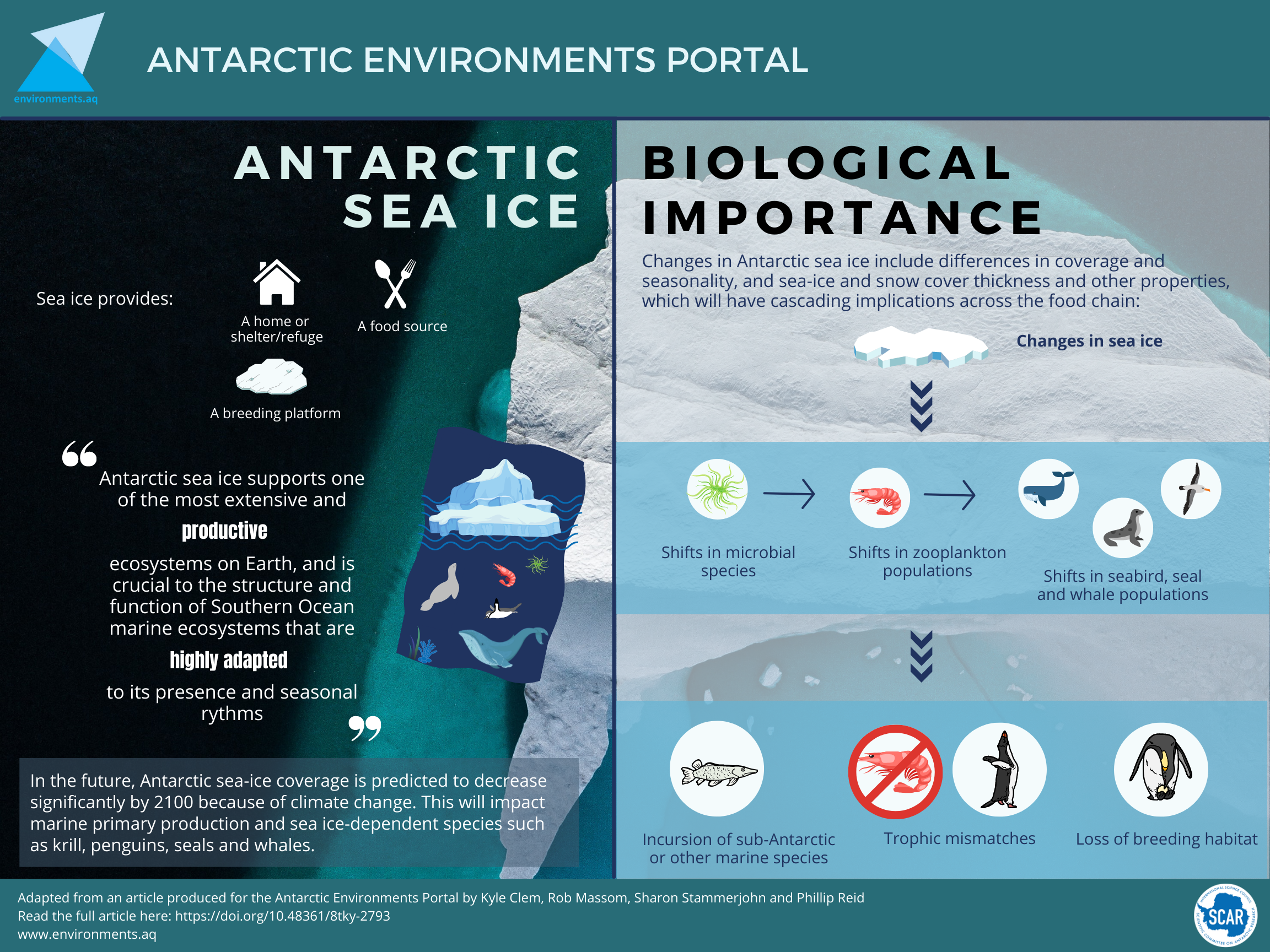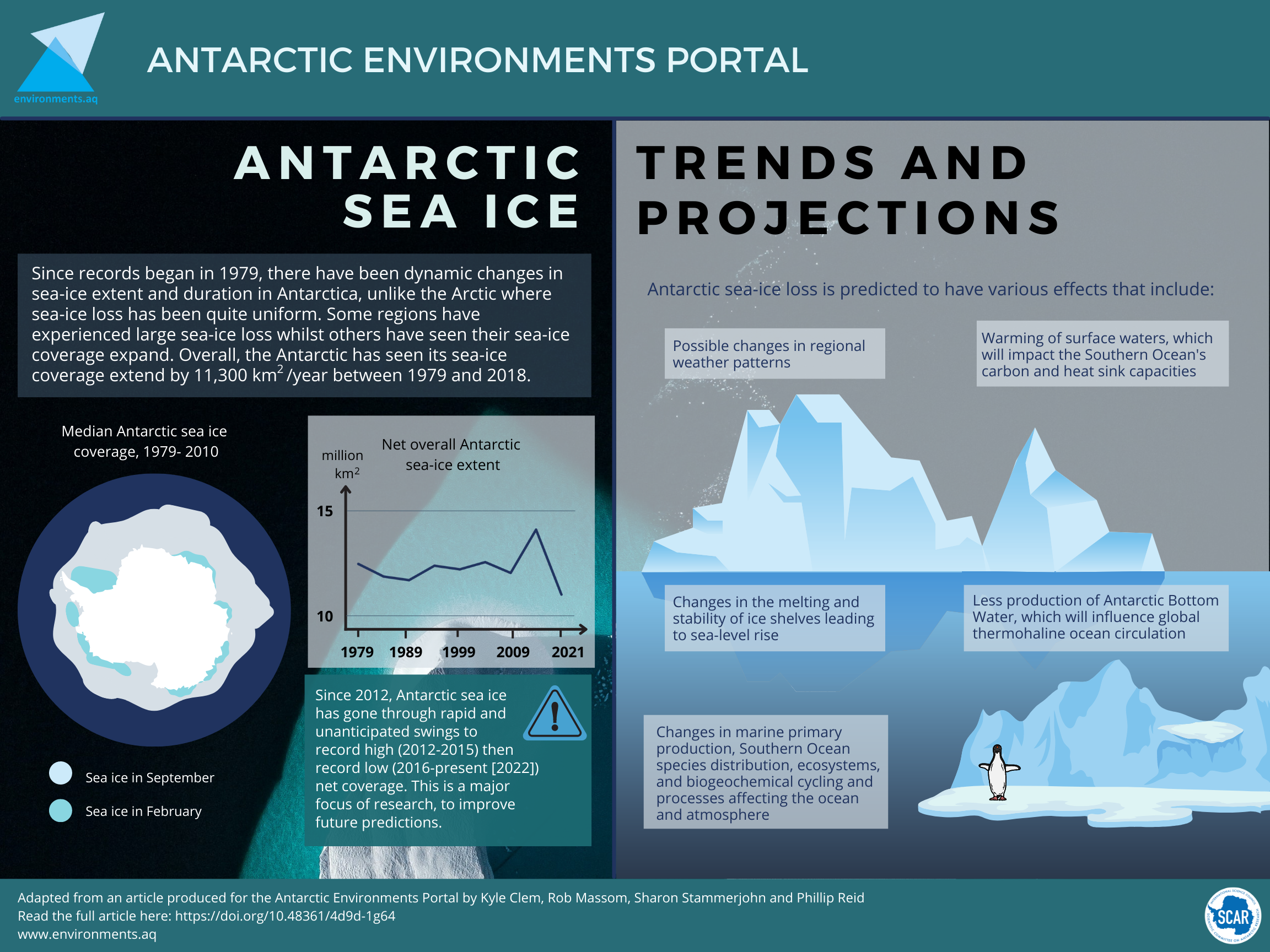Each year, sea ice transforms a vast area of the surface of the Southern Ocean around Antarctica. This remarkable annual cycle has an immense influence on the Southern Ocean environment and beyond.
Three new Antarctic Environments Portal Information Summaries examine the physical role and function, biological importance and trends and future projections of Antarctic sea ice.
Authors: Kyle Clem, Rob Massom, Sharon Stammerjohn and Phillip Reid
Antarctic Sea Ice #1: https://doi.org/10.48361/tqhw-c793
Antarctic Sea Ice #2: https://doi.org/10.48361/8tky-2793
Antarctic Sea Ice #3: https://doi.org/10.48361/4d9d-1g64
You can read the Information Summaries here:
- Antarctic Sea Ice #1: Physical Role and Function
Sea ice – comprising frozen seawater in the form of both moving pack ice and stationary coastal landfast ice (fast ice) – is of major climatic, ecological and societal importance.
The sea ice also accumulates snowfall, which substantially influences its physical and optical properties, its growth and decay, and its interactions with other parts of the ice-ocean-atmosphere system.
Improved knowledge of Antarctic sea ice characteristics and ice-ocean-atmosphere-biosphere processes, interactions, and feedbacks is required to develop and improve Earth System models. Such knowledge is crucial to reducing current uncertainties in those models and to improve confidence in projections of the Antarctic sea-ice system over the coming decades and beyond, including its impacts and coupled feedbacks. Improved sea-ice forecasting capability is also required to support safe and efficient shipping and logistical activities around the Antarctic continent.
- Antarctic Sea Ice #2: Biological Importance
Antarctic sea ice, in the form of immobile coastal “fast ice” and the more extensive moving pack ice, supports one of the most extensive and productive ecosystems on Earth and is crucial to the structure and function of Southern Ocean marine ecosystems that are highly attuned to its presence and seasonal rhythms.
Changes in Antarctic sea-ice coverage and seasonality, thickness (and snow cover depth) and properties have wide-ranging consequences with cascading effects across food chains.
- Antarctic Sea Ice #3: Trends and Future Projections
Since 2012, sea ice in the Antarctic has undergone rapid and unanticipated swings in its net overall coverage, to first record high (2013-2015) then record low (2016-2022) coverage. Determining the drivers and effects of these abrupt shifts, together with differing seasonal and regional contributions, is a major focus of current research. This represents a substantial challenge given the complex processes involved in ice-ocean-atmosphere interactions and feedbacks. But better understanding of these interactions and feedbacks is crucial to improving the representation and simulation of sea-ice coverage and seasonality in climate and Earth System models. This is pivotal to improving near-term forecasting and long-term projections of Antarctic sea ice and the effects of sea ice change on the coupled climate-ocean-biosphere system in the coming decades.
About the Antarctic Environments Portal
The Antarctic Environments Portal (www.environments.aq) links Antarctic science and Antarctic policy, by providing easy access to information on a range of scientific issues relevant to Antarctic environmental governance and management.
The Portal supports the Scientific Committee on Antarctic Research (SCAR) in its role of providing independent and objective scientific advice to the decision making bodies of the Antarctic Treaty system. All scientific information available through the Portal is prepared by Antarctic experts and goes through a rigorous editorial process before publication.



